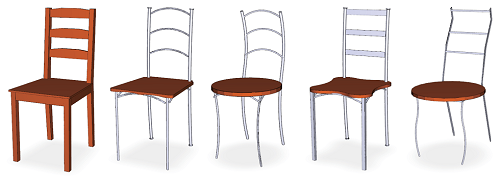Reforming Shapes for Material-aware Fabrication
Eurographics Symposium on Geometry Processing 2015
Yong-Liang Yang
Univ. of Bath/KAUST
Jun Wang
Baidu Research/KAUST
Niloy J. Mitra
UCL
Abstract
As humans, we regularly associate shape of an object with its built material. In the context of geometric modeling, however, this inter-relation between form and material is rarely explored. In this work, we propose a novel data- driven reforming (i.e., reshaping) algorithm that adapts an input multi-component model for a target fabrication material. The algorithm adapts both the part geometry and the inter-part topology of the input shape to better align with material-aware fabrication requirements. As output, we produce the reshaped model along with respective part dimensions and inter-part junction specifications. We evaluate our algorithm on a range of man-made models and demonstrate a variety of model reshaping examples focusing only on metal and wooden materials.Results


 |
Given an input model (left), multiple reform results can be generated from different example dataset. |

Video
Acknowledgements
BibTex
@ARTICLE{GeoMat2015,
title = {Reforming Shapes for Material-aware Fabrication},
author = {Yang, Yong-Liang and Wang, Jun and Mitra, Niloy J.},
journal = {Computer Graphics Forum (Symposium on Geometry Processing 2015)},
volume = {34},
issue = {5},
year = {2015}
}
 |
 |